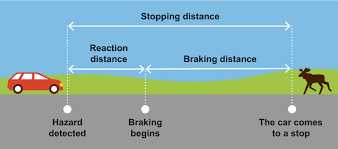Understanding your car’s braking system and knowing how to use it effectively is crucial for safe driving. Brakes are the most important safety feature in your vehicle, and proper knowledge of how they work can prevent accidents and ensure a smooth driving experience. This guide will explain the different types of car brakes, their components, and how to apply them correctly in various driving situations.
Types of Car Brakes
1. Disc Brakes
Disc brakes are commonly found on the front wheels of most vehicles and on all four wheels of many modern cars. They consist of a brake disc (rotor) attached to the wheel and a caliper that squeezes the brake pads against the disc to slow down or stop the vehicle.
Advantages
- Better heat dissipation
- Consistent performance in wet conditions
- More effective at higher speeds
2. Drum Brakes
Drum brakes are typically used on the rear wheels of some vehicles. They consist of a brake drum attached to the wheel and brake shoes that press against the inside of the drum to slow down or stop the vehicle.
Advantages
- Lower manufacturing cost
- Effective for parking brakes
3. Anti-lock Braking System (ABS)
ABS is an advanced braking system designed to prevent wheel lockup during sudden or hard braking. It uses sensors and a computer to modulate brake pressure, allowing the driver to maintain steering control.
Advantages
- Reduces the risk of skidding
- Improves control during emergency braking
- Shorter stopping distances on slippery surfaces
Components of the Braking System
1. Brake Pedal
The brake pedal is the interface between the driver and the braking system. Pressing the brake pedal activates the brakes.
2. Brake Fluid
Brake fluid transmits the force from the brake pedal to the brake components. Regularly check and maintain the brake fluid level.
3. Brake Pads and Shoes
Brake pads (in disc brakes) and brake shoes (in drum brakes) create friction against the rotors or drums to slow down the vehicle. They wear out over time and need to be replaced periodically.
4. Rotors and Drums
Rotors (discs) and drums are the surfaces against which the brake pads and shoes press to create friction and stop the vehicle.
5. Calipers
Calipers are used in disc brakes to hold the brake pads and apply pressure against the rotors.
6. Brake Lines
Brake lines carry brake fluid from the master cylinder to the brake calipers and drums.
Applying Brakes Correctly
1. Gradual Braking
Apply the brakes gradually to avoid sudden stops. Gradual braking helps maintain control and prevents skidding.
2. Emergency Braking
In an emergency, apply firm, steady pressure on the brake pedal. If your car is equipped with ABS, do not pump the brakes; let the system modulate the pressure.
3. Downhill Braking
When driving downhill, use a combination of engine braking (downshifting) and light, intermittent braking to control your speed without overheating the brakes.
4. Wet Conditions
In wet conditions, apply the brakes earlier and more gently to avoid hydroplaning. ABS can help maintain control, but it’s still essential to drive cautiously.
5. Parking Brakes
Always use the parking brake when parking, especially on inclines. This prevents the car from rolling and reduces strain on the transmission.
Maintenance Tips
1. Regular Inspection
Inspect your brakes regularly for wear and tear. Look for signs of worn brake pads, leaking brake fluid, and damaged brake lines.
2. Brake Fluid Check
Check the brake fluid level periodically and top it up if necessary. Replace the brake fluid according to your vehicle’s maintenance schedule.
3. Listen for Noises
Unusual noises such as squealing or grinding when applying the brakes can indicate worn brake pads or other issues. Have them checked by a professional.
4. Monitor Brake Performance
If you notice any changes in brake performance, such as a spongy pedal, reduced stopping power, or pulling to one side, have your brakes inspected immediately.


Lovart AI Design Agent is reshaping how we approach creative workflows-its tri-modal interface and GPT-4o integration make refining design concepts feel intuitive and seamless.